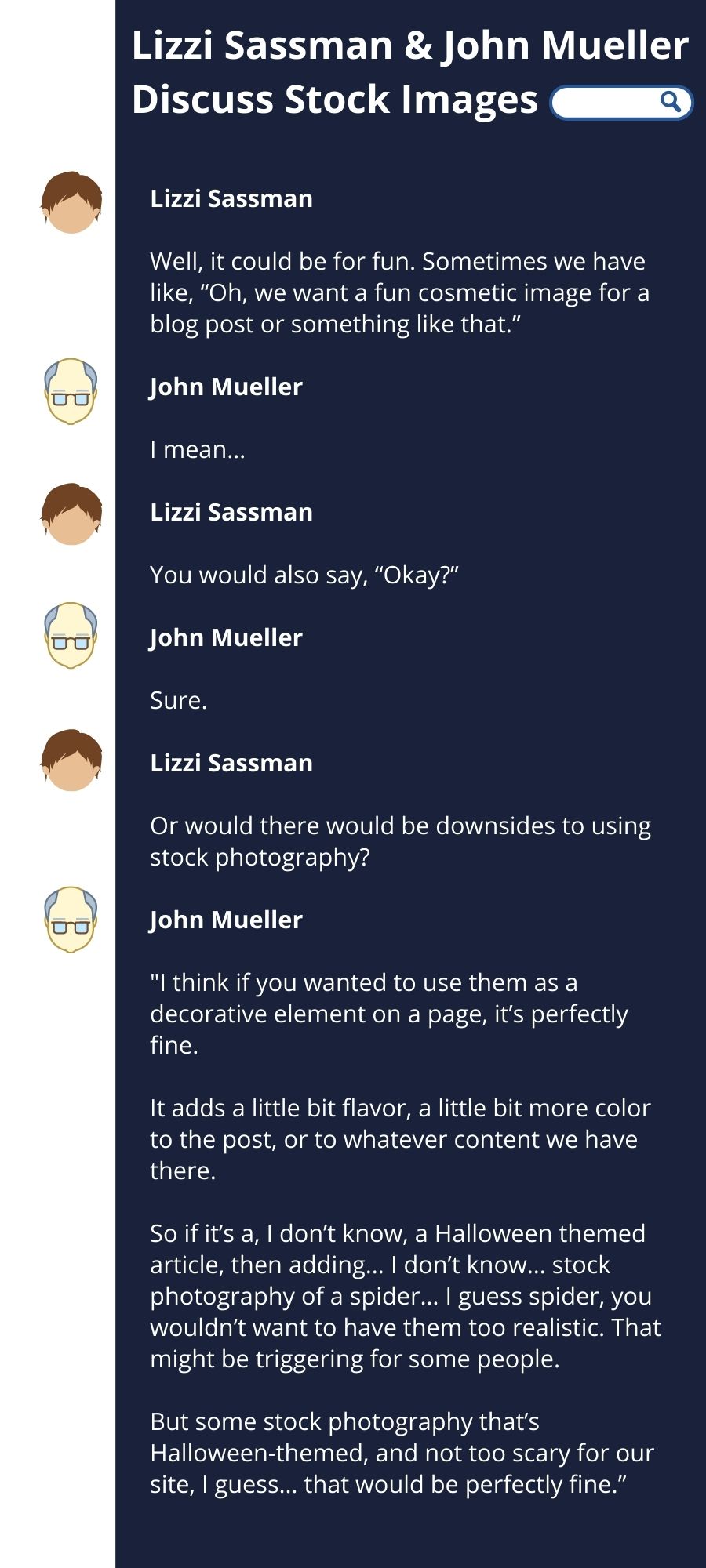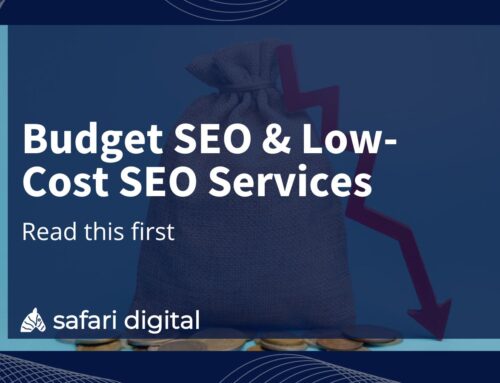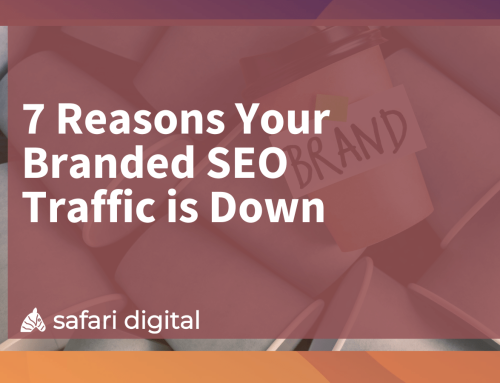
Whether you’re a new business, or a global powerhouse looking to cut down or your marketing and advertising spent, we’ve all been guilty of using stock images to support online content at some point.
In 2023, stock images are rife across millions of websites. It doesn’t matter whether you’re using one of the paid platforms or whether you’re opting for user contributed platforms that offer free images, there are going to be some obvious implications that come with using the same images as other websites.
In this article, we’ll take a look at the implications of using Stock Images and SEO, the positive or negative impacts that this might have, and find out what Google says about using stock images for SEO.
Are stock images bad for SEO?
Before we jump into the nitty gritty, let’s answer the most important question – are stock images bad for SEO?
According to Google, no, stock images do not directly impact SEO performance.
An interaction between Lizzi Sassman (who is responsible for curating Googles Search Central documentation) and John Mueller (who doesn’t need an intro given you’ve landed on a web page discussing the intricacies of a meta-SEO topic) discussed the implications of stock images on SEO.

Conversation Between Lizzi Sassman & John Mueller
Lizzi Sassman:
Well, it could be for fun. Sometimes we have like, “Oh, we want a fun cosmetic image for a blog post or something like that.”
John Mueller:
I mean…
Lizzi Sassman:
You would also say, “Okay?”
John Mueller:
Sure.
Lizzi Sassman:
Or would there would be downsides to using stock photography?
John Mueller:
I think if you wanted to use them as a decorative element on a page, it’s perfectly fine. It adds a little bit of flavor, a little bit more color to the post, or to whatever content we have there.
So if it’s a, I don’t know, a Halloween themed article, then adding… I don’t know… stock photography of a spider…
I guess spider, you wouldn’t want to have them too realistic. That might be triggering for some people.
But some stock photography that’s Halloween-themed, and not too scary for our site, I guess… that would be perfectly fine.
A full video with the exchange is available below starting at the 4.20min mark
So there you have it. Stock images do not impact your SEO efforts and Google’s John Mueller confirms that it is perfectly fine to use stock images as a way to improve the readability of an article.
So then, if not an SEO ranking factor – should you bother?
It’s a fair question.
If Google is directly saying that stock images are not a detractor for your SEO efforts, is it really worth investing in media resources?
Whilst stock images do not directly impact your SEO performance, there are a few solid reasons (which we’ll outline below) why you should still be creating original images on your website landing pages and blog posts.
Poor user experience: When it comes to delivering a positive on-site experience, appearances matter. Stock images can look ‘cheap’ and indirectly increase bounce rates and lower dwell times. To Google, this may signal that a website is not delivering a relevant or high-quality experience which may lead to lower SEO rankings.
Not unique: Let’s face it, setting up a website can be done in a few hours. For users, a website that is chock-full of stock images can reflect that fact. With such a low barrier to entry, original images that accurately reflect the values and uniqueness of a website can directly improve trust.
Copyright infringement: Stock images are free, right? Well, not always. As many website owners have found out the hard way, choosing stock images that are licenced and require a commercial licence to show can leave you open for a copyright infringement case. If you do plan on use stock images, make sure that you carefully review the usage rights of the image before uploading it to your website.
So, plenty of negatives, but let’s take a look at some of the pros and cons of stock images for SEO below so that you can weigh up your options.
Pros of Using Stock Images
There are some obvious pros of using stock images. Firstly, if you’re a new website or you’re on a limited marketing budget, it can be very difficult to draw from a selection of images that you own or have created.
Obviously, stock photos are easy to access and can help to cut down on advertising spend in the initial setup phase of a business. Some of the most obvious benefits of using stock photos include:
• Budget friendly
• Readily available to use
• Time saving
• Variety of application
• Can improve SEO (by virtue of including an image)
• Professional image quality
• Can be edited and customised to suit brand
• Can be used for commercial purposes
Cons of Using Stock Images
Whilst stock photos provide an easy and readily available media resource for those looking to populate their website, there are a number of downsides when it comes to using stock images. Stock photos can be seen as impersonal, generic, and may even discredit the legitimacy of a business. Some of the most obvious drawbacks of stock images include:
• Generic
• Low consumer trust
• Can be seen as impersonal
• Potential for copyright infringement
• May not align with brand image or values
• Can be difficult to find suitable image
• Quality and relevancy can be questionable
Stock Images & SEO – Final Thoughts
So there you have it, stock images and SEO – everything that you need to make a decision and move forward with confidence. Whilst stock images can be a valuable and accessible asset for a new website, it’s important to choose wisely and ensure you don’t get caught out by a copyright infringement claim. Using unique, high-quality images may require investment, however, it can be an important way to build trust, boost user experience, and provide the best possible on-site experience.







